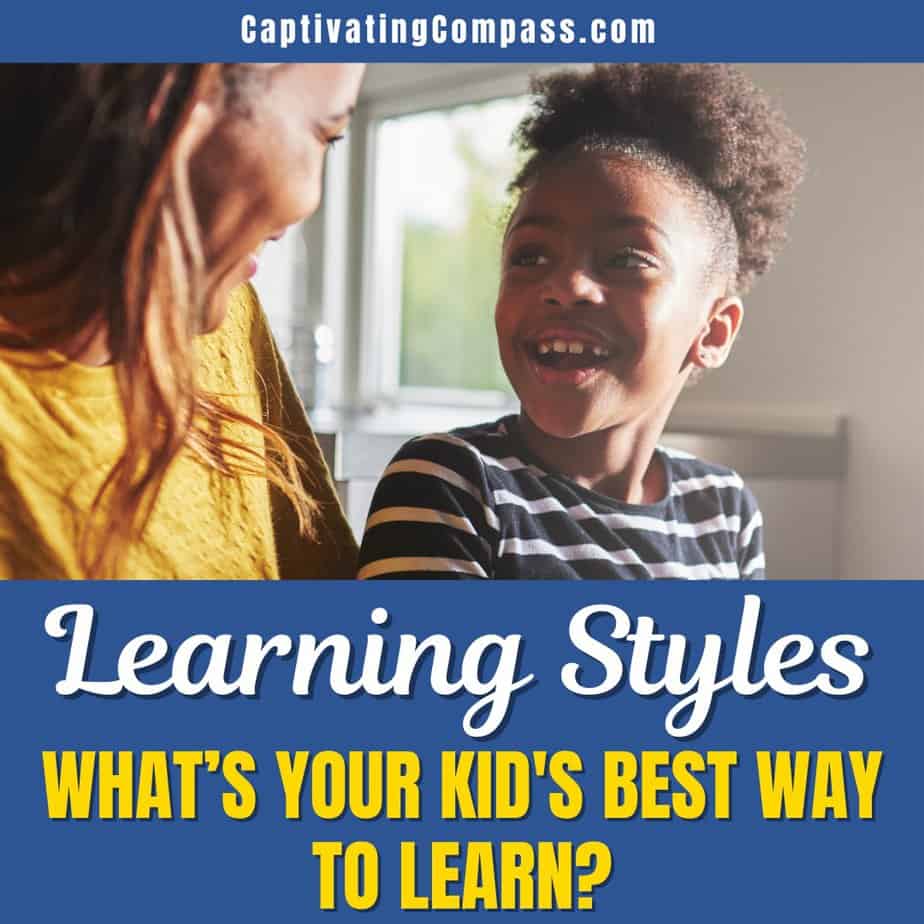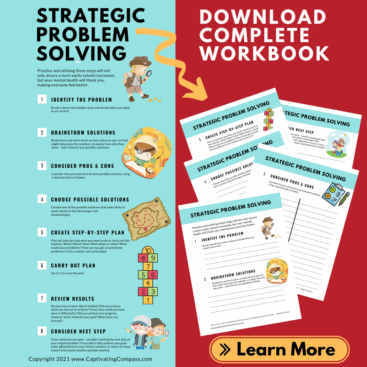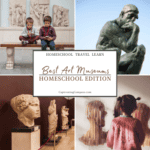
Understanding Your Child’s Type of Learning: How to Identify Their Best Way to Learn
Understanding your child’s learning style is crucial in helping them succeed academically. Every child has a unique way of learning, so it’s important to pay attention to how your child responds to different teaching methods. Look for clues in their behavior and preferences, such as whether they prefer visual aids, hands-on activities, or listening to instructions.
By observing how your child engages with different learning styles, you can better tailor their educational experiences to suit their needs. Your homeschool may look very different than a traditional school, but helping your child learn and retain information in an environment that helps them excel is at the heart of many homeschool families.
Encouraging your child to explore different learning styles can also help them discover the best way to learn. Support your child as they experiment with various methods, whether it’s through trying out different study techniques or participating in different types of activities. By providing an encouraging environment for your child to explore their individual learning needs, you can help them find the specific learning style that works best for them.
You may even find they have a preference for more than one of the different styles of learning. Have fun trying out different strategies to see what resonates with your child.
Ultimately, supporting your child’s individual learning needs is key to helping them thrive academically. By recognizing and accommodating their unique way of learning, you can help them reach their full potential and build confidence in their abilities. Embrace the diversity of learning styles and preferences in children, and be proactive in creating a learning environment that supports your child’s specific needs.
With your guidance and encouragement, your child can develop a strong foundation for learning that will benefit them throughout their academic journey.
-
Product on sale
 Strategic Problem Solving WorkbookOriginal price was: $12.00.$7.00Current price is: $7.00.
Strategic Problem Solving WorkbookOriginal price was: $12.00.$7.00Current price is: $7.00.
Exploring Different Learning Styles: Helping Your Child Process Information Effectively
Every child has a unique learning style that works best for them. Take the time to observe how your child learns best. Some children are visual learners, while others prefer auditory or kinesthetic learning. By understanding your child’s learning style, you can help them process information more effectively. Encourage your child to explore different ways of learning to find what works best for them. Remember that every child is different, and what works for one may not work for another.
What type of learner do you have?
Verbal learners are great at telling you what they have learned through discussion. Homeschoolers who prefer an auditory learning style will really enjoy learning by using audiobooks, podcasts, and other types of audio recordings, as well as discussing different ideas. If you have a kid who loves reading while bouncing on the trampoline, you probably have a student who learns best with the kinesthetic learning style. They love hands-on activities and lesson plans that allow them to move while they learn. Have you heard of logical learners? These are kids who love to read and write. They learn best by reading and taking notes.
Visual learners often benefit from seeing information presented in a visual format, such as through charts, diagrams, or videos. They may also prefer to read instructions or information rather than listen to it. If your child is a visual learner, consider incorporating visual aids into their study routine to help them better understand and retain information.
On the other hand, auditory learners may prefer listening to information rather than reading or seeing it. They may benefit from listening to lectures, audiobooks, or having discussions about the material. Kinesthetic learners, on the other hand, learn best through hands-on activities and movement. They may benefit from using manipulatives, conducting experiments, or engaging in role-playing exercises to help them grasp concepts.
You’ll probably find that your homeschooler has a mix of learning styles.
Some subjects will naturally lend themselves to specific styles, so enjoy adding a variety of ways to learn in order to find the best fit for your student. Student success looks different for every homeschool family.
Encouraging your child to explore different learning styles can help them become more versatile learners. By being open to trying new approaches, they can discover what works best for them and improve their ability to process and retain information. Remember that what works for one child may not work for another, so it’s important to be patient and supportive as your child navigates their own unique learning journey.
Helping your child understand their unique learning style can empower them to take control of their education and achieve academic success, no matter the subject matter.
Debunking the Myth of One-Size-Fits-All Education: Tailoring Learning Styles for Homeschooled Students
Every child is unique and has their own preferred way of learning. Individual learning styles can be unique and personalized. Tailoring education to match your child’s learning style can lead to better understanding and retention of information. Homeschooling allows for the flexibility to adapt curricula to fit your child’s individual needs. Consider incorporating a variety of teaching methods to accommodate different learning styles. By understanding your child’s preferred learning style, you can create a more effective and enjoyable learning experience.
Some children may excel with hands-on activities, while others may prefer visual aids or auditory instruction. Take the time to identify your child’s learning style. You can tailor your teaching approach to better suit their needs. This personalized approach can help to make learning more engaging and effective for your child.
By incorporating a variety of teaching methods into your homeschooling curriculum, you can cater to different learning styles and keep your child stimulated and interested in their studies. For example, if your child is a visual learner, you can use charts, diagrams, and videos to help them grasp complex concepts.
If your child is an auditory learner, incorporating discussions, podcasts, or audiobooks may be more beneficial. By adapting your teaching methods to suit your child’s individual needs, you can create a well-rounded education experience that caters to their strengths and preferences, likely using the main learning styles.
Nurturing Your Child’s Unique Learning Style: Strategies for Supporting Effective Learning at Home
Recognize your child’s learning style by observing how they prefer to engage with information. Every child is unique and has their own way of learning. Some children may thrive when they can touch and manipulate objects, while others may prefer visual aids or enjoy listening and discussing ideas. By paying attention to how your child best absorbs information, you can tailor learning activities at home to match their individual preferences. For kinesthetic learners, encourage hands-on activities that involve movement and exploration.
Provide opportunities for them to build and create, allowing them to physically engage with the material. Visual learners may benefit from using visual aids and diagrams to help them understand concepts more easily. Providing colorful charts, graphs, or illustrations can enhance their learning experience. For auditory learners, engage in discussions, read aloud together, and encourage them to listen to audiobooks or podcasts. By recognizing and catering to your child’s unique learning style, you can help them thrive in their own way.
Celebrate your child’s unique learning style.
Instead of trying to fit your child into a one-size-fits-all approach to learning, embrace their individuality and encourage them to learn in a way that feels natural to them. By celebrating their strengths and preferences, you can boost their confidence and motivation to learn. Provide a supportive environment where they can explore, experiment, and make mistakes without fear of judgment.
Encourage them to take risks and try new things, knowing that you are there to support them every step of the way. By fostering a positive and nurturing home environment, you can help your child develop a love of learning that will last a lifetime.
Recognize your child’s learning style by observing how they prefer to engage with information. Tailor learning activities at home to match your child’s individual preferences. Whether your child is a kinesthetic, visual, or auditory learner, there are plenty of ways to support their effective learning at home. By providing hands-on activities, visual aids, or engaging discussions, you can create a learning environment that caters to your child’s unique strengths.
Celebrate their individuality and help them thrive in their own way. Embrace the diversity of learning styles and watch as your child grows and flourishes in their learning journey.
Learning Style Diversity: How to Recognize and Support Your Homeschooler
Every child has a unique way of learning that works best for them. Recognizing and supporting your child’s learning style can lead to better academic success. Some children may thrive with hands-on activities, while others excel with visual aids. By catering to your child’s individual learning style, you can make learning more enjoyable and effective. Take the time to observe how your child learns best and tailor your teaching methods to suit their needs.
Embracing diverse learning styles in home education can help your child reach their full potential. It is important to understand that not all children learn in the same way, and what works for one child may not work for another. By recognizing and supporting diverse learning styles, you can create a personalized learning experience that caters to your child’s strengths and preferences. This can help boost their confidence and motivation, leading to improved academic performance.
When you adapt your teaching methods to accommodate your child’s unique learning style, you create a more engaging and effective learning environment. By incorporating activities and materials that align with your child’s preferences, you can make learning more enjoyable and meaningful for them.
This personalized approach can help your child retain information more effectively and develop a deeper understanding of the subjects they are studying. By embracing diverse learning styles in home education, you can help your child succeed and thrive academically.

The Evolution of Student Learning Style in Online Education
Online education has revolutionized the way students learn by providing flexibility and personalized learning experiences. With the variety of learning styles, online educators have adapted their teaching methods and online courses to support the needs of their students. Students who prefer the visual learning style can benefit from videos and interactive graphics, while auditory learners may prefer podcasts or online lectures. Kinesthetic learners thrive in hands-on activities and virtual simulations, allowing them to engage with the course materials in a more physical way.
online education for homeschoolers
By recognizing and accommodating different learning styles, online education for homeschoolers has become effective for students of all abilities. This adaptability allows students to learn in a way that best suits their individual needs and preferences, ultimately leading to improved understanding and retention of the material.
Online educators with small class sizes are able to tailor their lessons to meet the diverse learning styles present in their virtual classrooms. This personalized approach to learning has been especially beneficial for students who may struggle in traditional classroom settings but flourish in the online environment.
Each student’s learning style can be taken into account while still providing opportunities for physical movement and group discussions, with different people in their class. It’s an excellent choice for homeschoolers wanting to accommodate the different types of learning styles in their family.
Incorporating a variety of multimedia resources and interactive tools, online educators are able to create engaging and dynamic learning experiences that cater to the unique strengths and preferences of each student. This customization not only enhances the overall learning experience but also empowers students to take control of their own education.
As online education continues to evolve in the homeschool space, the focus on accommodating different learning styles will remain essential in ensuring that every student has the opportunity to succeed in their academic pursuits.

You May Also Enjoy
- 75 Positive Affirmations: Printable for your Homeschool
- Life Skills in the Kitchen: Basic Cooking for Teens
- The Best Homeschool World History & Geography Curriculum Pairs
- 26 Debate Questions for Teens | Fun Debate Topics
- Astronomy Curriculum for High School: A Faith-Based Guide
- Best Art Museums in Europe: Homeschooler Edition








